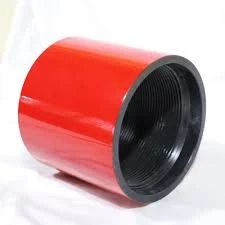- Afrikaans
- Albanian
- Amharic
- Arabic
- Armenian
- Azerbaijani
- Basque
- Belarusian
- Bengali
- Bosnian
- Bulgarian
- Catalan
- Cebuano
- Corsican
- Croatian
- Czech
- Danish
- Dutch
- English
- Esperanto
- Estonian
- Finnish
- French
- Frisian
- Galician
- Georgian
- German
- Greek
- Gujarati
- Haitian Creole
- hausa
- hawaiian
- Hebrew
- Hindi
- Miao
- Hungarian
- Icelandic
- igbo
- Indonesian
- irish
- Italian
- Japanese
- Javanese
- Kannada
- kazakh
- Khmer
- Rwandese
- Korean
- Kurdish
- Kyrgyz
- Lao
- Latin
- Latvian
- Lithuanian
- Luxembourgish
- Macedonian
- Malgashi
- Malay
- Malayalam
- Maltese
- Maori
- Marathi
- Mongolian
- Myanmar
- Nepali
- Norwegian
- Norwegian
- Occitan
- Pashto
- Persian
- Polish
- Portuguese
- Punjabi
- Romanian
- Russian
- Samoan
- Scottish Gaelic
- Serbian
- Sesotho
- Shona
- Sindhi
- Sinhala
- Slovak
- Slovenian
- Somali
- Spanish
- Sundanese
- Swahili
- Swedish
- Tagalog
- Tajik
- Tamil
- Tatar
- Telugu
- Thai
- Turkish
- Turkmen
- Ukrainian
- Urdu
- Uighur
- Uzbek
- Vietnamese
- Welsh
- Bantu
- Yiddish
- Yoruba
- Zulu
Understanding the Dimensions and Specifications of Bull Plug Components in Various Applications
Bull Plug Dimensions A Comprehensive Overview
Bull plugs are essential components in many industries, specifically in oil and gas pipelines, hydraulic systems, and various fluid transfer applications. Understanding the dimensions and specifications of bull plugs is critical for ensuring optimal performance, compatibility, and safety in systems where they are applied.
What is a Bull Plug?
Bull plugs, also known as blind plugs, are designed to seal the ends of pipes or fittings, effectively preventing the flow of fluid or gas. They are typically used in scenarios where a temporary seal is required, or when equipment needs to be tested or maintained. Bull plugs come in various sizes and materials, catering to a wide range of applications and ensuring that they can withstand different pressure levels and environmental conditions.
Standard Dimensions
The dimensions of a bull plug can vary significantly depending on the application and the specifications of the piping system. Commonly, they are available in a variety of diameters, thread sizes, and lengths. For instance, the nominal size often corresponds to the inside diameter of the pipe, typically ranging from as small as 1/8 inch to several inches in diameter. Additionally, the length of the plug may differ based on design requirements, with options for shorter plugs for compact installations or longer ones for deep or recessed fittings.
Materials
The choice of material is another critical factor affecting the dimensions and performance of bull plugs. Common materials include
1. Steel Known for its strength and durability, steel bull plugs are often used in high-pressure applications. They may come in various grades, with dimensions that support robust use in industrial settings.
bull plug dimensions

2. Stainless Steel For applications requiring corrosion resistance, stainless steel bull plugs are ideal, especially in chemical processing or marine environments. The dimensions are similar to steel plugs but provide better longevity against harsh conditions.
3. Plastic and PVC These materials are often used in plumbing or less demanding applications. They tend to be lighter and can come in various sizes, although they generally are not suitable for high-pressure environments.
Importance of Accurate Dimensions
Selecting the correct bull plug dimensions is crucial for several reasons
- Compatibility Proper dimensions ensure a tight fit within the intended piping system, preventing leaks and maintaining the integrity of the overall system.
- Safety An ill-fitting plug can result in catastrophic failures, leading to spills, pressure leaks, or even explosions in high-pressure systems. Accurate dimensions mitigate these risks.
- Efficiency The right size ensures that pressure testing and maintenance can be performed effectively, allowing for accurate readings and efficient workflow.
Conclusion
In conclusion, understanding bull plug dimensions is vital for anyone involved in the design, installation, or maintenance of piping systems. With a variety of materials and size options available, it is essential to select the right bull plug for your specific application to ensure safety, efficiency, and compatibility. Whether operating in oil and gas, hydraulics, or plumbing, taking the time to choose the correct bull plug dimensions will pay off in the long run through enhanced performance and reduced risk of failures.
-
Tubing Pup Joints: Essential Components for Oil and Gas OperationsNewsJul.10,2025
-
Pup Joints: Essential Components for Reliable Drilling OperationsNewsJul.10,2025
-
Pipe Couplings: Connecting Your World EfficientlyNewsJul.10,2025
-
Mastering Oilfield Operations with Quality Tubing and CasingNewsJul.10,2025
-
High-Quality Casing Couplings for Every NeedNewsJul.10,2025
-
Boost Your Drilling Efficiency with Premium Crossover Tools & Seating NipplesNewsJul.10,2025







